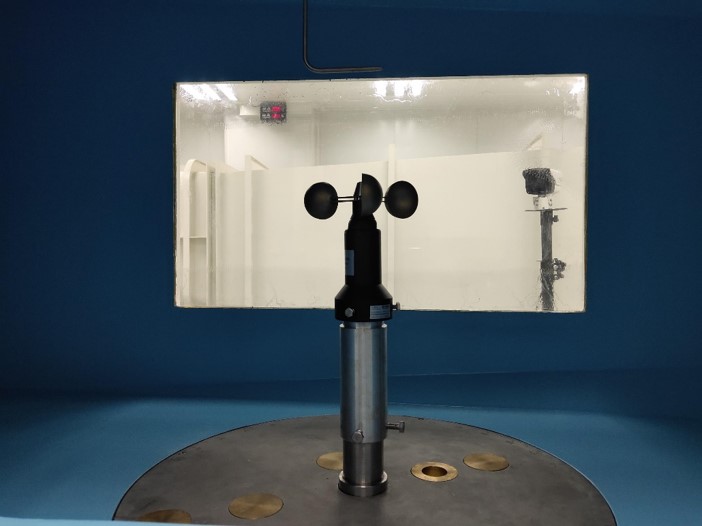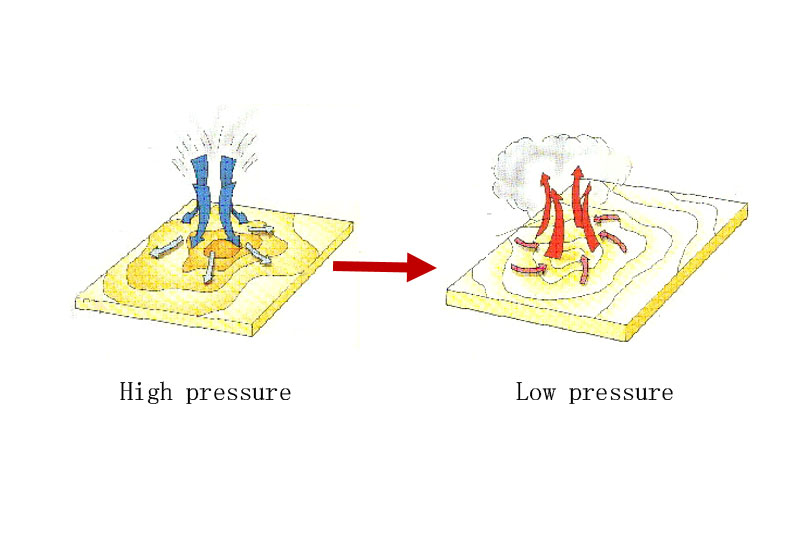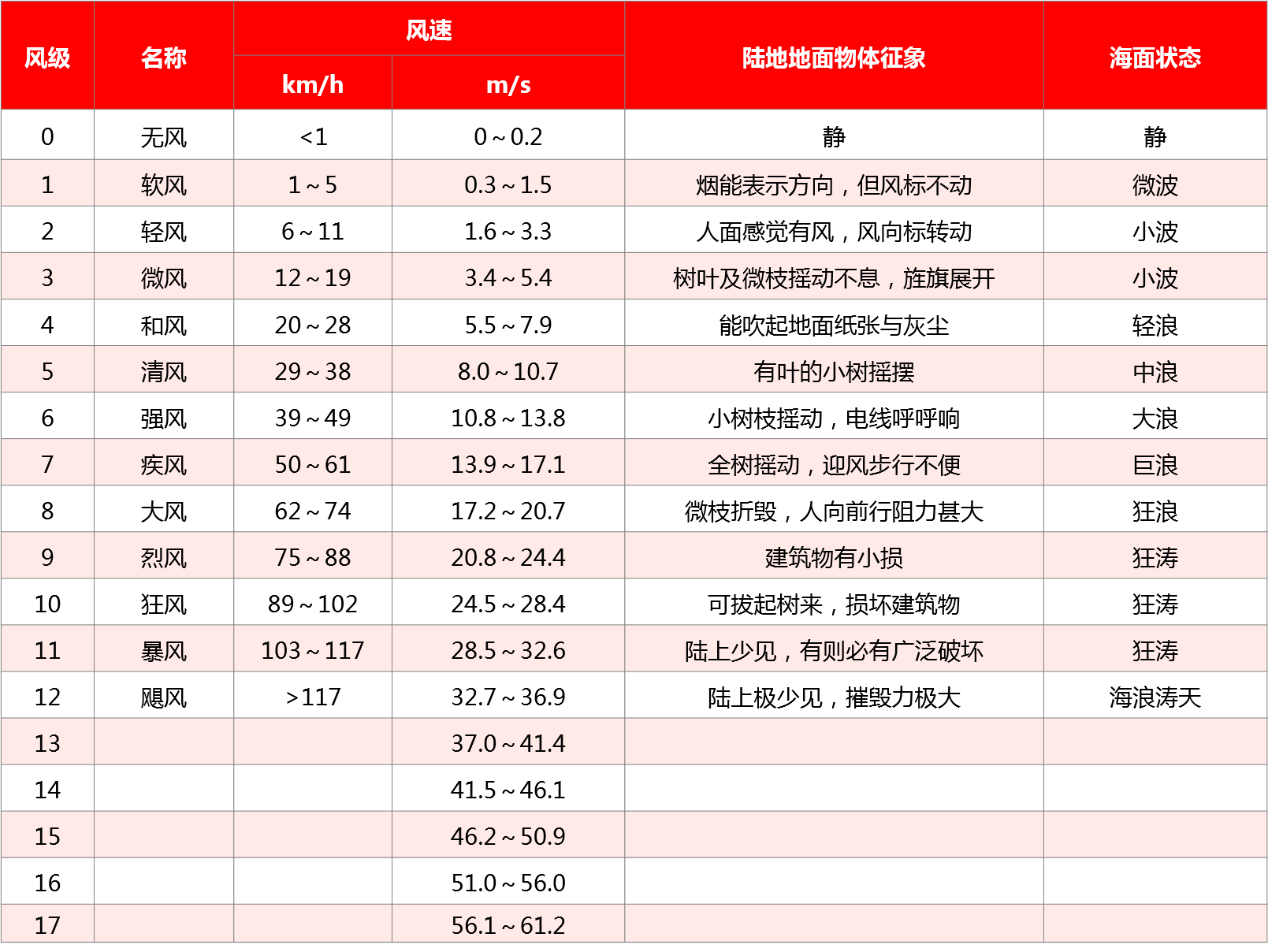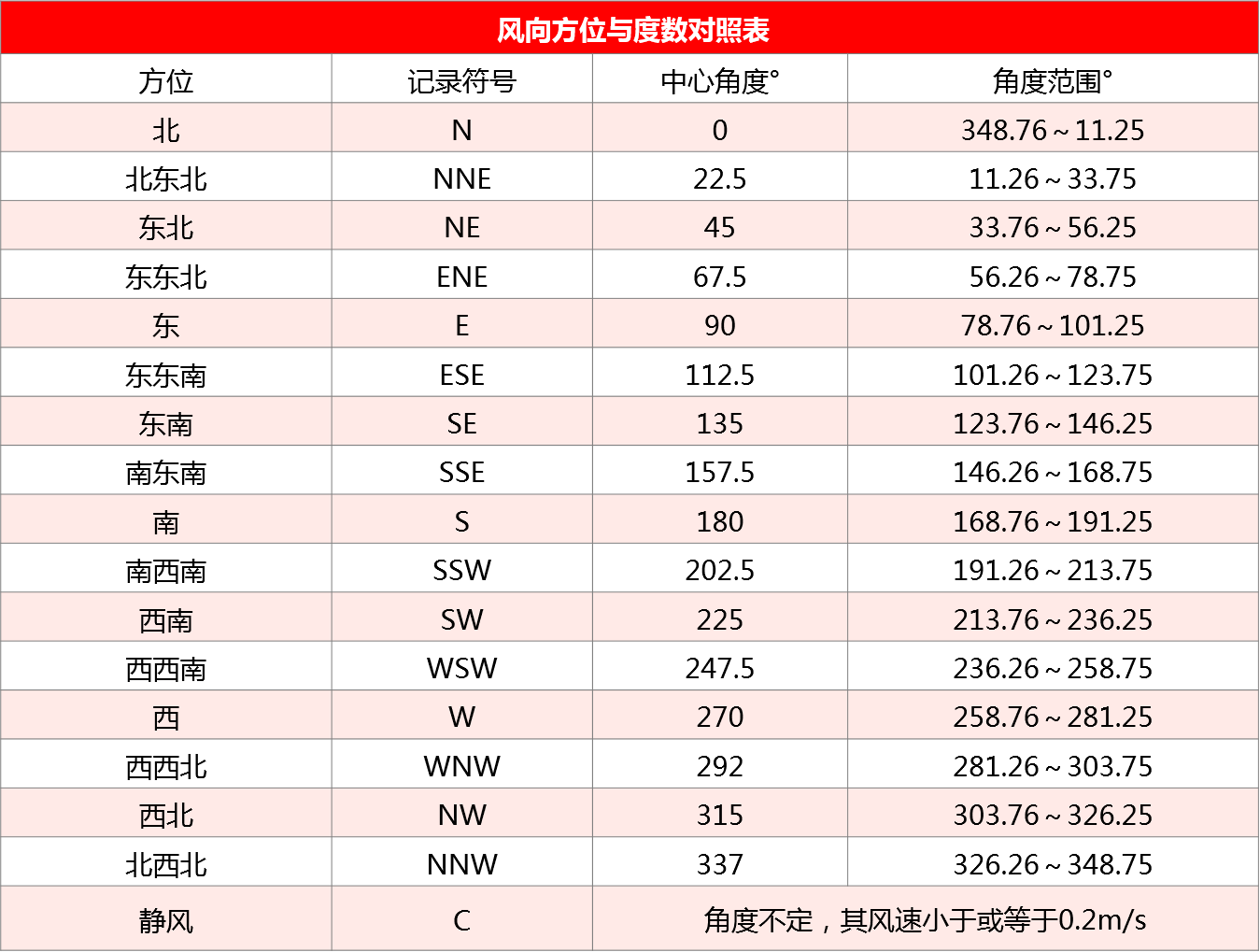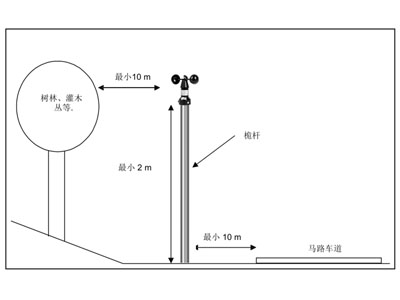What is wind?
Wind is a natural phenomenon caused by air flow. It is a three-dimensional vector superimposed on large-scale regular airflow by many small-scale pulsations that vary randomly in space and time.At the same level, owing to the air pressure between two places is different, the air flows surge from high-pressure area to low-pressure area. That is the direct reason of the birth of wind.And there are many other reasons, such as the unevenness of cold and heat on the ground, the strength of solar radiation, the rotation of the earth, etc.
The wind measured in ground meteorological observations is a two-dimensional vector (horizontal motion), which refers to the horizontal motion of the air and is represented by wind direction and wind speed.
Basic concepts of wind speed and wind scale
1.Wind speed
Wind speed is the horizontal distance that air moves per unit time. The wind speed is in meters per second (m/s) or km/h. According to the size of the wind speed, the wind can be divided into 18 grades (0-17 grades)
2.Maximum wind speed
Refers to the maximum value of the 10-minute average wind speed in a given period.
3. Extreme wind speed
It refers to the maximum value of the instantaneous wind speed in a given period of time, which is an instantaneous value.
4.Instantaneous wind speed
Refers to the instantaneous horizontal movement speed of air micelles. In automatic weather stations, it is defined as the average wind speed of 3s.
5.Average wind speed
Refers to the average volume (ie horizontal wind speed) over a 10-30 minute period.
6.Wind scale
A measure of wind strength. The international wind scale was drawn up by the British Beaufort in 1805, so it is also called "Beaufort scale"
It was originally divided into 0-12 grades, a total of 13 grades, according to the influence of wind on cooking smoke, sand, ground objects, fishing boats, fishing waves, etc. Later, on the basis of the original classification, the corresponding wind speed limit was added.
Since 1964, the wind level has been expanded to 18 levels (0-17).
Wind level is widely used in the meteorological field, while in the commercial field, it is more inclined to use the intuitive wind speed per hour, or wind speed per second, to describe the speed of the wind. The wind speed and wind level can be converted by formulas.
The corresponding formula of wind level and wind speed:V=(0.84×F)2/3
The relationship between wind direction and degree
1.wind direction
The direction of the wind blowing.
2.maximum wind direction
Refers to the wind direction that occurs most frequently within a specified time period. For manual observation, the wind direction uses the 16-azimuth method; for automatic observation, the wind direction is in degrees (°).
Wind direction azimuth and degree comparison table
Monitoring method of wind speed and direction
There are several ways to measure wind speed:
Rotary AnemometerThe rotary anemometer uses two technologies of photoelectric and magnetic sensing to obtain the data by measuring the rotation angle of the wind cup per unit time under the action of the wind, that is, the rotation speed.
There are two types of optoelectronics, the light-to-beam type and the light-reflection type. The measurement accuracy is low and has not been highly accepted by the market.
Magnetic sensor (Hall sensor) is a non-contact magnetic rotary encoder with high measurement accuracy, which is the technical principle used by most wind sensors on the market.
Acoustic Anemometer (Ultrasonic Anemometer)
Wind speed is measured as a function of the speed of sound waves in the atmosphere as a function of wind speed.
Thermal anemometer (hot wire thermal film anemometer)
Wind speed is measured using the property that the heat dissipation rate of the heated object is related to the surrounding air velocity.
pressure anemometer
Wind speed (pitot tube) is measured using the pressure effect of wind (wind pressure is proportional to the square of wind speed).
How to monitor wind direction
wind vaneWhen the direction of the wind and the wind vane form a certain angle, the wind exerts pressure on the wind vane, and this force can be decomposed into two wind forces parallel and perpendicular to the wind vane. Because the wind-receiving area of the head of the wind vane is relatively small and the wind-receiving area of the tail is relatively large, the wind pressures felt are not equal, and the wind pressure perpendicular to the tail generates a wind pressure moment, which makes the wind vane rotate around the vertical axis until the head of the wind vane is facing the wind. In the coming direction, the wind vane is stable in a certain direction due to the balance of forces on both sides of the wing.
Ultrasonic anemometer: Through two pairs of ultrasonic probes perpendicular to each other on the horizontal plane, the wind speed in two horizontal directions is measured at the same time, and then orthogonal synthesis is performed to calculate the wind speed and wind direction on the horizontal plane.
Ultrasonic AnemometerTwo pairs of ultrasonic probes that are perpendicular to each other on the horizontal plane simultaneously measure the wind speed in two horizontal directions, and then perform orthogonal synthesis to calculate the wind speed and wind direction on the horizontal plane.
Wind sensor signal output method
Analog signal output method
1. Current signal: 4-20mA (mainstream), 0-20mA, etc., the output signal has strong anti-interference ability and small attenuation
2. Voltage signal: 0-10V
3. Pulse signal: commonly used 2~573Hz, 0~573Hz, etc.
Digital signal output method
1. RS485 signal
2. Asynchronous serial signal
3.Gray code (mainly used for wind direction output):6-bit Gray code has 64 azimuths, select the gray code corresponding to the typical azimuth (such as 0°, 90°, 180°, 270°) to judge and detect.
Correct wind sensor installation
The standard installation height of the wind sensor is 10 m above the ground on flat and open ground. Open area is defined as the distance between the anemometer and any obstacle at least 10 times the height of the obstacle. Wind observations in the direct wake of a row of trees, houses, or any obstacle are of little value and contain little information about undisturbed winds. Because the wake can easily spread downwind to the equivalent of 12 or 15 times the height of the obstacle, 10 times the height of the obstacle is definitely the minimum requirement.
In practice, it is often difficult to find a good site or even a qualified site for a wind station.
